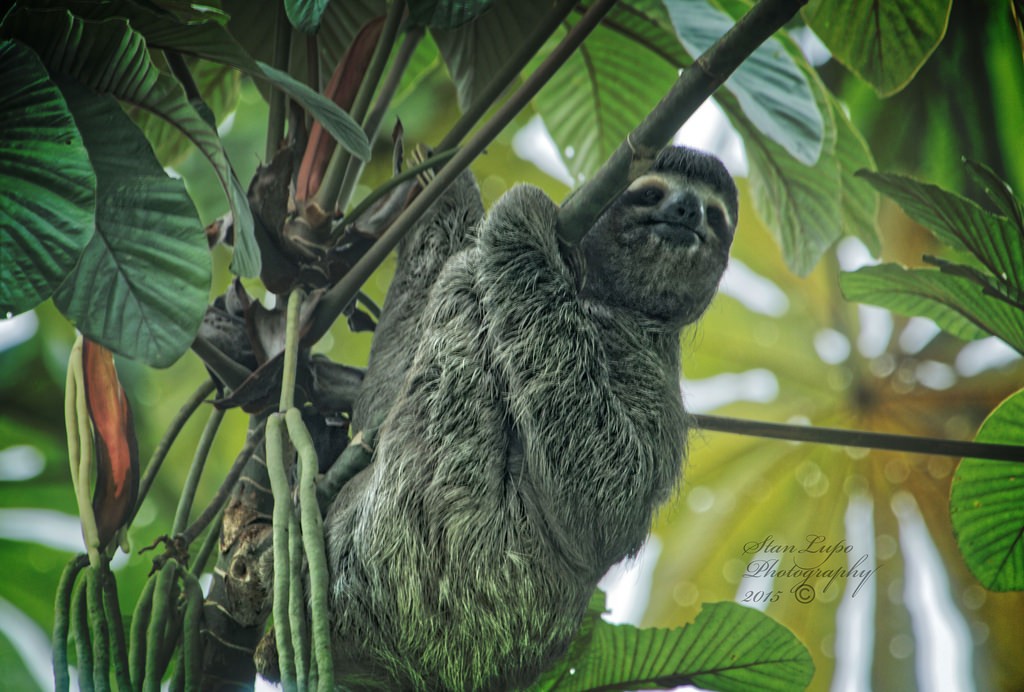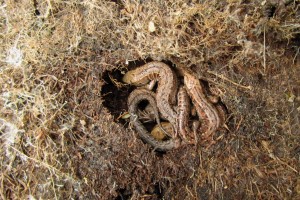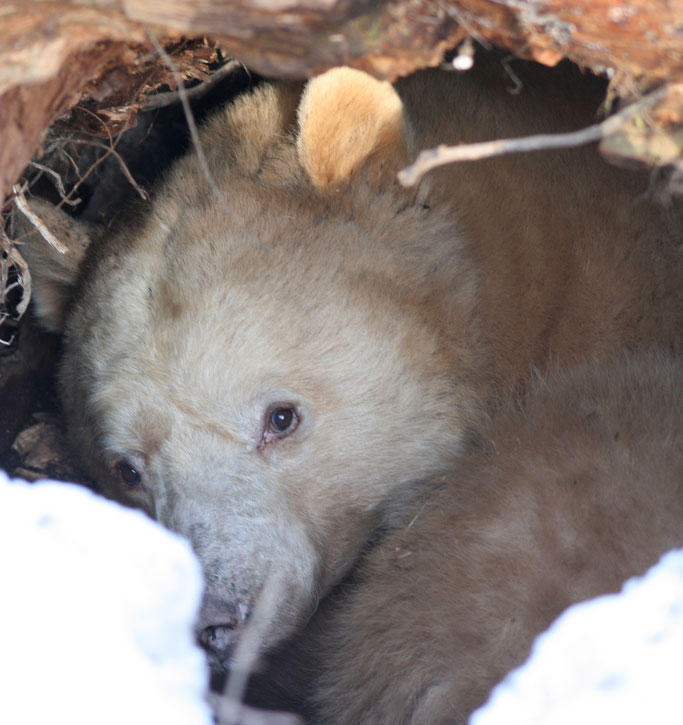Hibernation and sloth envy

Ironically, sloths, though otherwise pretty slothful, do not hibernate. Photo: Stan Lupo, Creative Commons, some rights reserved
Offhand I can’t think of much to recommend envy, greed, and gluttony, but sloth is different. Some creatures’ lives depend on being able to sleep for half the year, and I’m not talking about adolescents. Bats, woodchucks, ground squirrels, and other animals have survival strategies that include long periods of sloth. Ironically, sloths do not hibernate.
If hibernation can be loosely defined as a state of inactivity and lowered metabolism in warm-blooded animals (endotherms) during winter, then many of us in northern latitudes engage in it. Of course there’s more to it than that. It turns out that among biologists, the exact definition has been a matter of debate in the past.

Northern bat in hibernation. Photo: Magne Flaten, Creative Commons, some rights reserved
It used to be a term reserved for “deep” hibernators whose core temperatures and heart rates dropped to a tiny fraction of their summer values. A good example would be certain Arctic rodents whose internal temperatures fall below freezing. Now it’s applied to any animal having the means to actively lower body temperature and metabolism. Actively lowering one’s metabolism sounds like an oxymoron, but let’s not resort to name-calling.

Being cold-blooded, reptiles and amphibians do not hibernate, but brumate. Photo: Eskling, Creative Commons, some rights reserved
Cold-blooded animals (ectotherms) like frogs and snakes also become inactive in winter. It’s basically the same thing as hibernation but biologists call it brumation because more jargon makes scientists feel better, and we need to humor them so they keep up their good work.
With ectotherms, you could say hibernation happens to them; they don’t “do” it. Even if they don’t have to work at it like mammals do, their torpor is still impressive. Some frogs, turtles, and fish can overwinter in mud that is essentially devoid of oxygen, and are no worse for the wear come springtime.
Most hibernators modify their schedules according to the weather—if it stays mild into November, black bears and chipmunks den up later than usual. But some critters, known as obligate hibernators, doze off according to the calendar. Even if you took a European hedgehog to Aruba for the winter, it would go narcoleptic at the same time as its mates did back in the Scottish Highlands.

Kermodei bear in winter den under a tree stump. Photo: Jethro Taylor, Creative Commons, some rights reserved
Until recently, bears didn’t make the hibernator list, but now they’re lumped in with those Arctic ground squirrels that turn to popsicles in winter. Bears in the far north may not eat or drink for up to eight months, using stored fat for hydration and energy. If we were inert for that long our muscles would waste away, but they have processes to manage proteins so their muscles don’t atrophy.
In hot climates, summer is the unbearable season, and some animals sit it out by hibernating, except that’s not what it’s called. Naturally some thoughtful biologist coined a term specific to summer torpor. Estivation is the proper word for hot-weather snoozing. Who behaves like this? Well for one thing, some desert-dwelling frogs can surround themselves with a mucus “water balloon” to wait out dry spells. African lungfish do a similar trick when their ponds temporarily dry up.
What’s more surprising is that at least one estivator is a primate, just like us. The fat-tailed dwarf lemur of Madagascar stays in a hollow tree for half the year until the heat’s off. If a close relative of ours (doubt it’s from my side of the family, though) can manage suspended animation, then what about us? Many Science-Fiction movies show astronauts waking after years of travel, and this may be yet another instance where what’s imaginary now becomes real tomorrow.

The Robinson Family “hibernating” in their suspended animation tanks in a publicity still for “Lost in Space.” Photo: public domain
Officials at NASA announced in the fall of 2014 that they’re looking for a way to place the crew of multi-year space missions into dormancy for three to six months at a time. Presumably this is so Mission Control won’t have to listen to the incessant “Are we there yet?” whining from the back of the spaceship.
Stories of human hibernation abound, but documented cases are rare. Occasionally someone falls through the ice and is revived hours later with no apparent brain damage or other long-term effects. This can happen when body temperature drops very fast, as it would if submerged in ice water or buried in snow. In Canada in 2001, a toddler who had wandered outside on a sub-zero night was found with her body near the freezing mark, and she recovered with no ill effects.
If body temperature falls slowly, hypothermia usually results, followed by death if it continues. Apparently there are exceptions. One case occurred in 2006 when a hiker spent three frigid weeks on Mt. Rokko in western Japan without food or water. When found, his temperature was about 72F. He also made a full recovery.
Scientists continue to study human hibernation, which could have important medical uses. But if you’re not a winter person, don’t pretend to hibernate by being slothful, just grin and bear it.
Paul Hetzler is a horticulture and natural resources educator with Cornell Cooperative Extension of St. Lawrence County.







